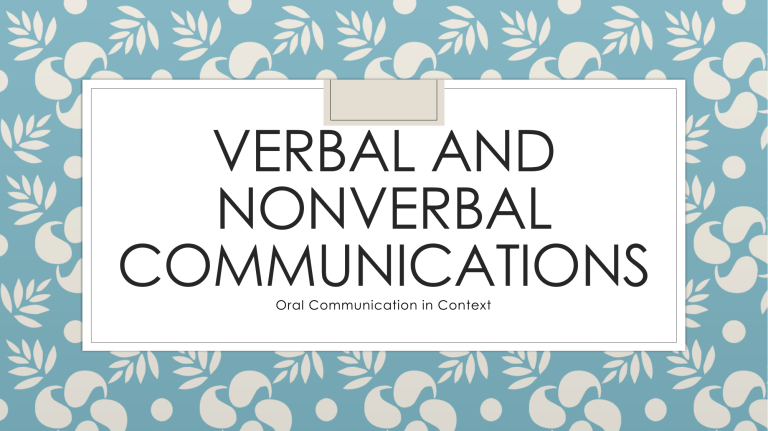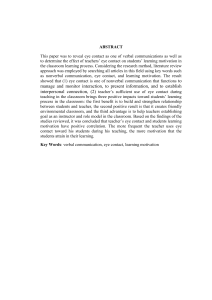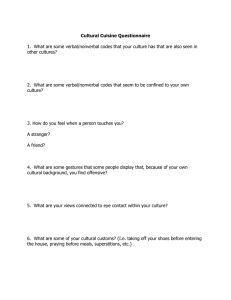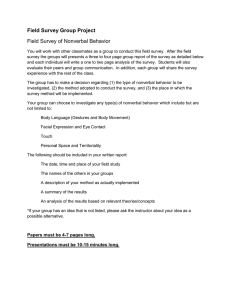
VERBAL AND NONVERBAL COMMUNICATIONS Oral Communication in Context Verbal Communication Verbal communication refers to an interaction in which words are used to a relay a message. For effective and successful verbal communication, use words to express ideas which can be easily understood by the person you are talking to. Considerations in Verbal Communication Appropriateness The language that you use should be appropriate to the environment or occasion (i.e. whether formal or informal) Considerations in Verbal Communication Brevity Speakers often use simple yet precise and powerful words are found to be more credible. Avoid fillers and insubstantial expressions which do not add to the message, such as “you know”, “actually” or “I guess”. Considerations in Verbal Communication Clarity The meanings of words, feelings, or ideas may be interpreted differently by a listener; hence, it is essential for you to clearly state your message and express your ideas and feelings. Considerations in Verbal Communication Ethics Words should be carefully chosen in consideration of the gender, roles, ethnicity, preferences and status of the person or people you are talking to. Considerations in Verbal Communication Vividness Words that vividly or creatively describe things or feelings usually add color and spice to communication; hence, you are encouraged to find ways to charm your audience through the use of vivid words. NONVERBAL COMMUNICATION Nonverbal Communication Nonverbal Communication refers to an interaction where behavior is used to convey and represent meanings. All kinds of human responses that re not expressed in words are classified as nonverbal communication. Examples of Nonverbal Communication: Stares, smiles, tone of voice, movements, manners of walking, standing and sitting, appearance. Style of attire, attitude towards punctuality and space, personality, and others. Nonverbal Communication Nonverbal Communication refers to an interaction where behavior is used to convey and represent meanings. All kinds of human responses that re not expressed in words are classified as nonverbal communication. Examples of Nonverbal Communication: Stares, smiles, tone of voice, movements, manners of walking, standing and sitting, appearance. Style of attire, attitude towards punctuality and space, personality, and others. IMPORTANCE OF NONVERBAL COMMUNICATION 1. It enhances and emphasizes the message of your speech, thus making it more meaningful, truthful and relevant 2. It can communicate feelings, attitudes, and perception without you saying a word. 3. It can sustain the attention of listeners and keep them engaged in the speech. 4. It gives the audience a preview to the type of speaker you are. 5. It makes you appear more dynamic and animated in your delivery. IMPORTANCE OF NONVERBAL COMMUNICATION 6.It serves as a channel to release tension and nervousness. 7.It helps make your speech more dramatic. 8.It can build a connection with listeners. 9.It makes you a credible speaker. 10.It helps you vary your speaking style and avoid monotonous delivery.




